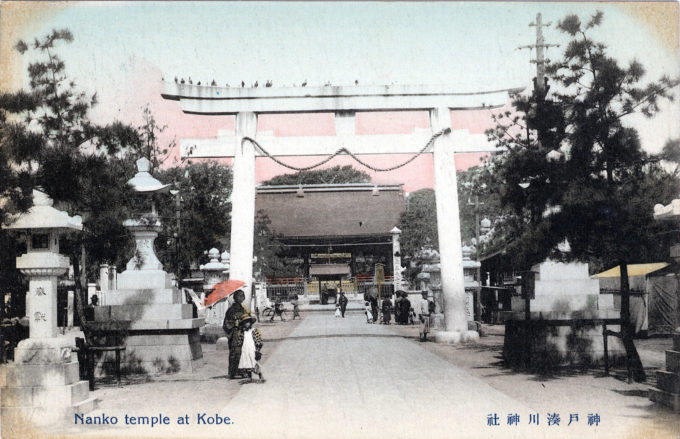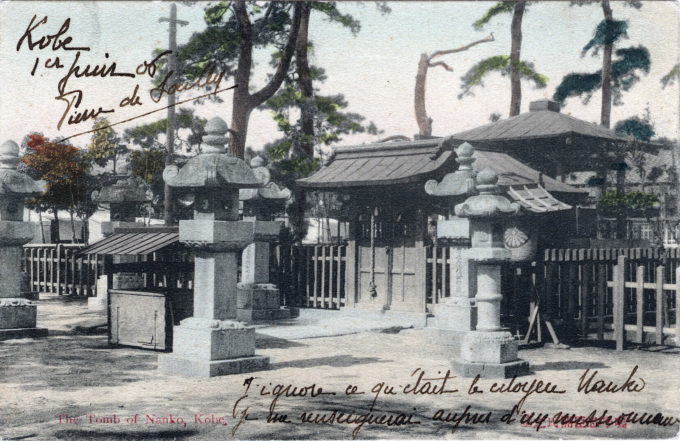See also:
The Bronze Statue of Kusunoki Masashige, Tokyo, c. 1930.
“As Yamato Dake and Yoshitsune are looked upon as noble types of Japanese chivalry, so is Kusunoki Masashige regarded to this day as the highest and noblest model that Japan has produced of the still higher quality of unselfish loyalty in a dying cause.
“His enemy Ashikaga, recognising the splendid virtues of his once brother in arms, sent his head to his native town in Kawachi for interment, and there is a suitable monument there. For many years, however, the place of his death and the interment of his body was unmarked.
“But at last in the early Tokugawa period, about 1600, Nanko Temple was built in his honour, Nanko being one reading of his name. His memorial stone is at the right as one enters. A very famous scholar, the daimyo of Mito, was asked to write his epitaph, but after much study said he could find no words worthy to be the epitaph of such a man, and so he had carved upon the stone simply ‘Ah! Chushin Nanko no haka‘ — (Ah! the grave of loyal Nanko.”)
“Every soldier who can, on his way to war, comes to Nanko to worship the spirit of Kusunoki. Even schoolboys, as they pass the temple of Nanko on tbe tram-car, sometimes turn and with reverent faces make an unobtrusive obeisance or salute.
“The Kusunoki crest, called eikusui, a half chrysanthemum on a wave, was given him by Godaigo. It is beautifully carved on the fine gate of the Kusunoki-dera. For some reason the crest and the name are much used as the name and sign of restaurants and hotels.”
– The Romance of Kobe, by Gertrude Cozad, 1918



